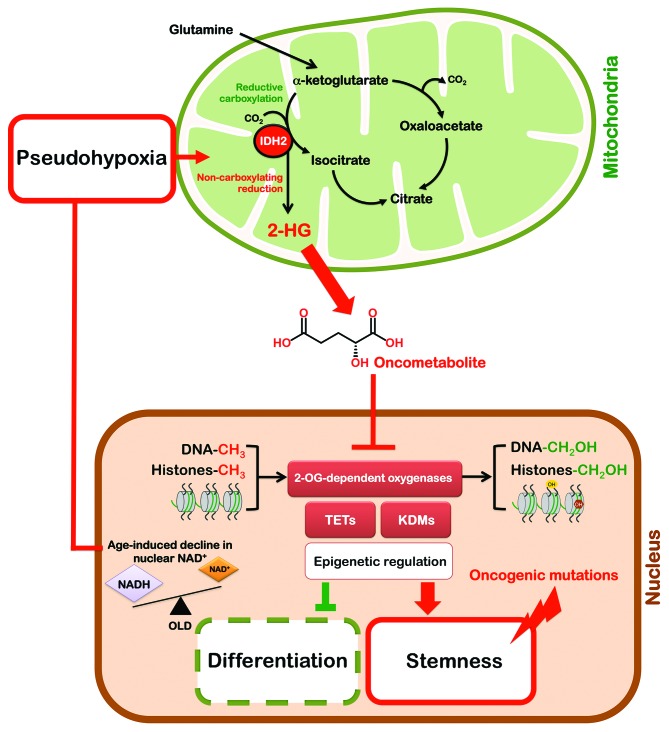Figure 3. Gero-oncometabolite mitochondrial retrograde-like signaling: A new candidate signaling pathway linking aging with cancer. Mitochondrial retrograde signaling is a pathway of communication from mitochondria to the nucleus under normal and pathophysiological conditions. It involves multiple factors that sense and transmit mitochondrial signals to effect changes in nuclear gene expression; these changes lead to a reconfiguration of metabolism to accommodate cells to defects in mitochondria. Although during aging there is a specific loss of mitochondrial, but not nuclear, encoded OXPHOS subunits, the pseudohypoxic state that disrupts the PGC1-α/β-independent nuclear–mitochondrial communication can contributes not only to the decline in mitochondrial function with age, but can also mediate an undesirable trade-off between Warburg reprogramming and oncometabolites production in normal cells. Glutamine-derived α-ketoglutarate is reductively carboxylated by the NADPH-linked mitochondrial IDH2 to form isocitrate, which can then be isomerized to citrate. However, the increased IDH2-dependent carboxylation of glutamine-derived α-ketoglutarate in hypoxia has been associated with a concomitant increased synthesis of 2-hydroxyglutarate (2HG) in cells with wild-type IDH1 and IDH2. Moreover, reprogramming of metabolism by HIF1α in the absence of hypoxia is sufficient to induce reductive activity on α-ketoglutarate that is uncoupled from carboxylation, thus producing the oncometabolite 2HG. This hypothetical scenario offers a plausible connection between gerometabolites-induced pseudohypoxia and oncometabolites-induced block in differentiation to promote tumorigenesis, likely through epigenetic mechanisms.

An official website of the United States government
Here's how you know
Official websites use .gov
A
.gov website belongs to an official
government organization in the United States.
Secure .gov websites use HTTPS
A lock (
) or https:// means you've safely
connected to the .gov website. Share sensitive
information only on official, secure websites.
